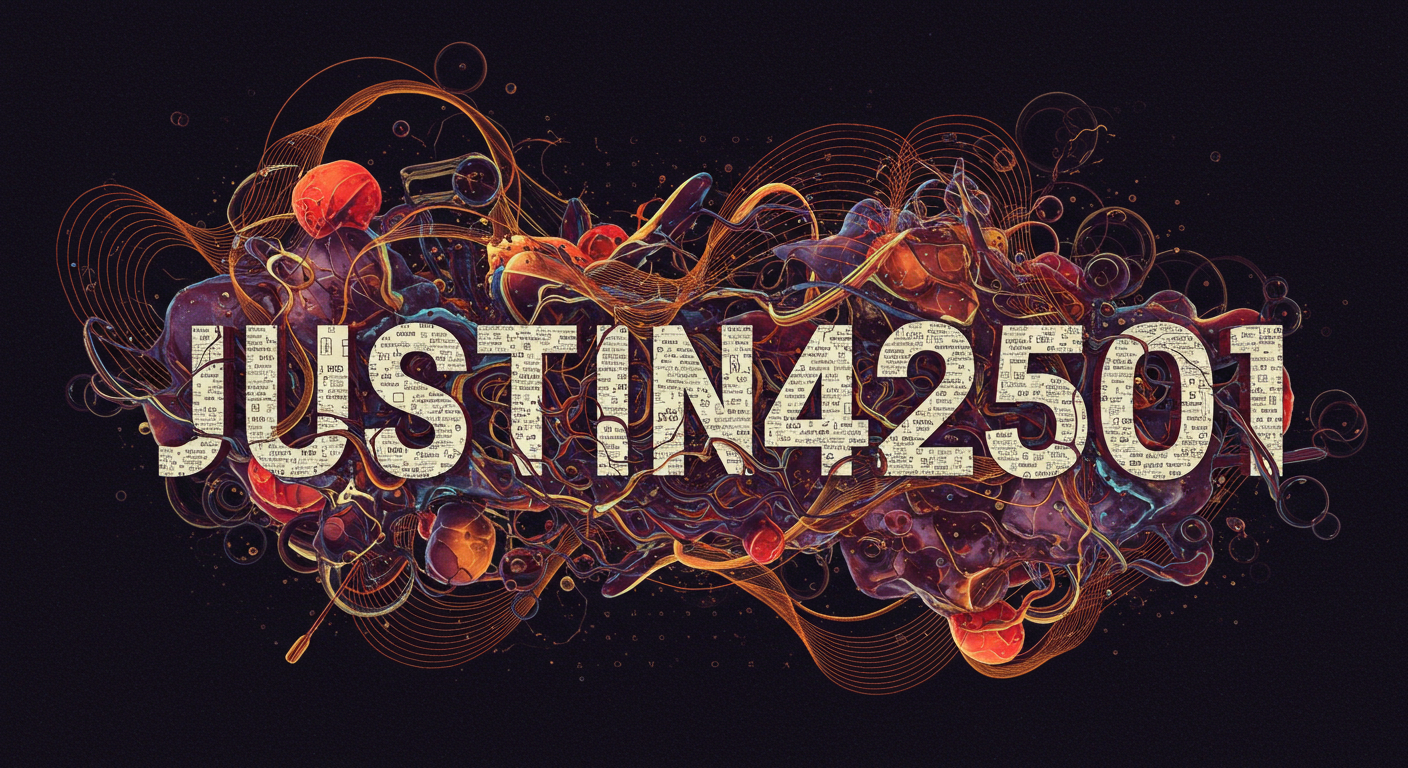Blog
The Time Finder: Your Ultimate Tool for Mastering Time Management

Time is one of the most valuable assets in life, yet it often feels like there is never enough of it. From balancing work commitments to personal responsibilities, the challenge of managing hours effectively is universal. This is where The Time Finder comes into play. It is not just a concept but a complete approach to regaining control over your schedule. By leveraging The Time Finder, individuals can unlock better productivity, reduce stress, and focus on what truly matters.
In this article, we will explore the significance of The Time Finder, practical strategies for time management, and how this tool can transform both personal and professional lives.
Understanding The Time Finder
The Time Finder represents a blend of systems, tools, and techniques designed to optimize how individuals spend their time. Unlike generic productivity hacks, The Time Finder focuses on building a sustainable routine that aligns with your goals. Its philosophy revolves around making time work for you, instead of constantly chasing the clock.
At its core, The Time Finder is about clarity, discipline, and prioritization. Whether you are a student, professional, or entrepreneur, applying its strategies ensures that every minute counts.
Why The Time Finder Matters in Daily Life
In today’s fast-paced world, time slips away easily. Scrolling through social media, attending unproductive meetings, or juggling multiple tasks without a clear plan drains efficiency. The Time Finder provides a structured approach to break this cycle.
Here’s a quick comparison to illustrate how The Time Finder can change your routine:
| Scenario | Without The Time Finder | With The Time Finder |
|---|---|---|
| Work Tasks | Missed deadlines, multitasking chaos | Prioritized tasks, on-time completion |
| Personal Life | Constant stress, no work-life balance | Scheduled breaks, quality family time |
| Productivity | Hours wasted on distractions | Increased focus, goal-driven routine |
This demonstrates the tangible benefits of embracing The Time Finder in everyday life.
The Time Finder and Goal Setting
One of the key features of The Time Finder is its emphasis on setting realistic goals. Goal setting is the foundation of effective time management. Without it, your day lacks direction. The Time Finder ensures that every goal is measurable, achievable, and aligned with your bigger vision.
By using this approach, you can create a roadmap that keeps you motivated and accountable. Instead of chasing after multiple objectives at once, The Time Finder teaches you to focus on priorities and achieve them step by step.
The Time Finder for Professionals
For professionals, managing time effectively is directly linked to career success. Emails, meetings, and tight deadlines can make the workday overwhelming. The Time Finder helps professionals by:
-
Encouraging task batching to reduce switching fatigue.
-
Setting time blocks for high-priority tasks.
-
Automating repetitive work to save hours each week.
By applying these techniques, professionals can meet deadlines with confidence, maintain work-life balance, and even free up time for career development.
The Time Finder in Education
Students also benefit significantly from The Time Finder. Many learners struggle with procrastination, exam preparation, and balancing academics with extracurricular activities. By adopting The Time Finder’s principles, students can:
-
Create structured study schedules.
-
Break large assignments into manageable tasks.
-
Allocate time for relaxation and hobbies to avoid burnout.
In the long run, these habits improve academic performance and reduce unnecessary stress.
The Role of Technology in The Time Finder
Modern tools and apps play a vital role in making The Time Finder effective. From digital calendars to productivity trackers, technology enhances time management by providing reminders, analytics, and automation. Popular applications like Trello, Notion, and Google Calendar align perfectly with The Time Finder’s principles.
Here’s a breakdown of how technology integrates with The Time Finder:
| Tool Type | Example | How It Supports The Time Finder |
|---|---|---|
| Calendar | Google Calendar | Time-blocking and reminders |
| Task Manager | Trello, Asana | Organizing priorities |
| Focus Apps | Forest, Pomofocus | Minimizing distractions |
When combined with discipline, these tools amplify the benefits of The Time Finder system.
Overcoming Procrastination with The Time Finder
Procrastination is one of the biggest obstacles to productivity. The Time Finder provides practical strategies to combat it, such as breaking large projects into smaller steps, applying the Pomodoro Technique, and setting deadlines that create a sense of urgency.
By taking consistent small steps, procrastination loses its grip, and progress becomes inevitable. The Time Finder emphasizes the psychology of action—once you start, momentum builds, and completion feels rewarding.
The Time Finder and Work-Life Balance
An important yet often overlooked aspect of time management is balance. Spending all your hours on work can lead to burnout, while ignoring responsibilities creates chaos. The Time Finder strikes the right balance by promoting the division of time between work, rest, and leisure.
This ensures that individuals not only meet their professional commitments but also enjoy personal fulfillment. For example, setting aside weekends for family or hobbies prevents exhaustion and boosts overall happiness.
Building Habits with The Time Finder
Habits determine how effectively we use our time. The Time Finder stresses the importance of building productive habits that stick. Simple daily rituals such as planning your day in the morning, limiting screen time, and reviewing progress at night can redefine how time is spent.
These small adjustments eventually compound into major improvements, leading to consistent success in both personal and professional life.
Challenges in Using The Time Finder
While The Time Finder is highly effective, challenges may arise. Some individuals may struggle with discipline or consistency, while others may find it difficult to adapt to structured planning. Recognizing these challenges is the first step in overcoming them.
Solutions include:
-
Starting small with simple routines.
-
Rewarding yourself for completing tasks.
-
Reviewing and adjusting strategies weekly.
By doing so, The Time Finder becomes more adaptable and personalized.
Conclusion
The Time Finder is not just a tool—it is a philosophy for mastering time management. By applying its strategies in everyday life, you can achieve greater productivity, reduce stress, and strike a perfect work-life balance. From professionals to students, The Time Finder empowers individuals to take control of their schedule and focus on what truly matters.
Adopting The Time Finder is more than just managing time; it’s about creating a life filled with purpose, clarity, and success.
FAQs
Q1: What is The Time Finder?
The Time Finder is a structured system for mastering time management through clarity, prioritization, and effective scheduling.
Q2: Can students use The Time Finder?
Yes, students can use The Time Finder to improve study schedules, reduce procrastination, and achieve better academic results.
Q3: Does The Time Finder require technology?
No, but digital tools like calendars and task managers enhance its effectiveness.
Q4: How does The Time Finder improve work-life balance?
It allocates time between work, rest, and personal activities, ensuring productivity without burnout.
Q5: Is The Time Finder suitable for everyone?
Yes, anyone seeking to master time management can adapt The Time Finder to their needs.
Blog
MKVMoviePoint: Your Ultimate Destination for Free Movie Streaming

Are you tired of scrolling through endless streaming platforms, only to find that your favorite movies are locked behind a paywall? Welcome to MKVMoviePoint, where movie lovers can indulge in their cinematic cravings without spending a dime. This ultimate destination for free movie streaming offers an extensive library that caters to every taste—whether you’re into action-packed blockbusters or heartwarming indie films. With its user-friendly interface and seamless navigation, MKVMoviePoint makes finding the perfect film as easy as pie. Say goodbye to subscription fees and hello to hours of entertainment at your fingertips!
The Features and Benefits of MKVMoviePoint
MKVMoviePoint stands out with its user-friendly interface. Navigating through the platform is a breeze, whether you’re tech-savvy or just starting to explore online streaming.
One of the key features is an extensive library. You’ll find everything from classic films to the latest blockbusters. The diversity caters to all tastes and preferences.
Another significant advantage is high-quality streaming options. Users can enjoy movies in various resolutions, ensuring an optimal viewing experience regardless of their internet speed.
Moreover, MKVMoviePoint offers regular updates on new releases. This means you won’t miss out on trending titles or hidden gems.
The site also prides itself on quick loading times, reducing frustration while waiting for your movie choice to buffer. It’s designed for seamless viewing without unnecessary interruptions.
There’s no need for subscriptions or hidden fees—just pure entertainment at your fingertips!
How to Use MKVMoviePoint for Free Movie Streaming
Using MKVMoviePoint is a breeze. Start by visiting the official website. The user-friendly interface welcomes you with various options.
Browse through an extensive library of movies and shows. You can search by genre, year, or title. This makes finding your favorite flicks effortless.
Once you spot a movie that piques your interest, click on it for more details. You’ll find information like cast, synopsis, and quality options.
When you’re ready to stream, just hit the play button. Most content streams smoothly without annoying ads interrupting your viewing experience.
For those who prefer downloading, MKVMoviePoint offers that option too. Simply select the download link and choose your preferred format.
Enjoy watching high-quality films without any subscription fees or hidden charges!
Why Choose MKVMoviePoint Over Other Streaming Websites?
When it comes to free movie streaming, MKVMoviePoint stands out from the crowd. Its user-friendly interface makes navigation easy for everyone. You don’t need to be tech-savvy to find your favorite films.
The extensive library is another significant advantage. With a diverse collection of genres, users can explore everything from classic films to the latest blockbusters. This variety keeps viewers engaged and entertained.
Additionally, MKVMoviePoint offers high-quality streams without annoying ads interrupting your viewing experience. Many other sites are cluttered with distractions that can ruin a good movie night.
Moreover, regular updates ensure that new titles are added consistently. Staying current with popular releases means you won’t miss out on trending content or hidden gems waiting to be discovered.
Community feedback helps shape its offerings, making MKVMoviePoint more responsive to viewer preferences than many other platforms in the market today.
Common Misconceptions About Free Movie Streaming
Many people believe that free movie streaming sites are synonymous with low-quality content. However, platforms like MKVMoviePoint challenge this belief by offering a vast library of high-definition films. Users can find both classic and contemporary titles, ensuring there’s something for everyone.
Another misconception is that accessing free streaming services carries significant risks. While it’s true some sites may pose security threats, reputable platforms prioritize user safety. They implement measures to protect personal information and deliver a secure viewing experience.
Some also argue that these services lack updated content. In reality, MKVMoviePoint frequently refreshes its catalog with new releases alongside timeless favorites. This dynamic selection keeps viewers engaged without the burden of subscription fees.
Many assume that using free streaming means enduring constant interruptions from ads or pop-ups. Well-designed websites focus on user experience by minimizing such distractions, allowing seamless enjoyment of movies without hassle.
The Future of Online Movie Streaming
The landscape of online movie streaming is evolving rapidly. New technologies are shaping how we consume content and enhancing viewer experiences.
Artificial intelligence is at the forefront, personalizing recommendations based on user preferences. This means that every viewer can find something tailored just for them.
Moreover, advancements in internet speeds and bandwidth will allow for higher-quality streaming without buffering issues. Imagine watching 4K or even 8K movies seamlessly from the comfort of your home.
Blockchain technology may also play a pivotal role in securing digital rights and reducing piracy concerns. This could revolutionize how filmmakers distribute their work while ensuring fair compensation.
As more platforms emerge, competition heats up, leading to innovative features like interactive storytelling and virtual reality cinema experiences. The future promises an exciting blend of creativity and technology that can redefine our relationship with film altogether.
Conclusion
MKVMoviePoint stands out in the crowded world of online movie streaming. Its user-friendly interface, combined with a vast library of films and shows, makes it an appealing choice for movie enthusiasts. The ability to access content without any subscription fees is undeniably attractive.
While misconceptions about free streaming often circulate, MKVMoviePoint proves to be a reliable option when used responsibly. Users can navigate through various genres and discover hidden gems that might otherwise go unnoticed on mainstream platforms.
As technology continues to evolve, so will the landscape of online streaming. Platforms like MKVMoviePoint are paving the way for more accessible entertainment options while offering users an enticing alternative to traditional paid services.
Exploring your favorite films should never feel like a hassle. With MKVMoviePoint, you have everything you need right at your fingertips—making it easier than ever to enjoy cinema from the comfort of your home or on-the-go.
Blog
Kalidcan: A Comprehensive Guide to Its Origins and Uses

In the ever-evolving world of wellness and natural remedies, Kalidcan has emerged as a fascinating topic of discussion. This unique substance boasts a rich history and an array of potential benefits that intrigue both enthusiasts and newcomers alike. Whether you’re seeking to enhance your health or simply curious about its origins, there’s much to uncover about Kalidcan. From ancient traditions to modern applications, this comprehensive guide will take you on a journey through time and usage, revealing why Kalidcan deserves a spot in your daily routine. Let’s dive in!
What is Kalidcan?
Kalidcan is a natural compound derived from various plants, known for its potential health-boosting properties. It has gained popularity in wellness circles due to its unique composition and versatility.
Often found in herbal supplements, Kalidcan can come in different forms such as powders or extracts. This adaptability makes it easy to incorporate into various products, ranging from teas to capsules.
What sets Kalidcan apart are the active compounds that contribute to its effects on the body. These components work synergistically, offering support for overall well-being.
With roots deeply embedded in traditional practices, Kalidcan holds a special place among those who seek holistic approaches to health. Its journey through time reflects not just an ancient wisdom but also the modern quest for sustainable living choices.
The Origins of Kalidcan
Kalidcan has a rich history that traces back to ancient civilizations. Its origins are often linked to herbal practices within traditional medicine systems. Cultures across Asia have utilized Kalidcan for centuries, recognizing its potential benefits.
The word itself is derived from local dialects, with roots that reflect the plant’s natural habitat and uses. Often found in lush forests and valleys, it thrives in specific climates.
Historically, healers would gather Kalidcan for its purported healing properties. They employed it as a remedy for various ailments, passing down knowledge through generations. This deep connection with nature highlights how communities revered this plant long before modern science took notice.
As time progressed, interest spread beyond borders. Scholars began documenting its attributes and applications, paving the way for further research into this fascinating botanical wonder.
Traditional Uses of Kalidcan
Kalidcan has deep roots in various cultures, revered for its medicinal properties. Traditionally, it was used in herbal remedies to address a range of ailments. Healers would often prepare infusions or tinctures from the plant.
In Ayurvedic medicine, Kalidcan is known for balancing doshas and promoting overall wellness. Its adaptogenic qualities help the body manage stress more effectively.
Indigenous communities have also employed Kalidcan in rituals and ceremonies. They believe it enhances spiritual connection and promotes mental clarity during meditation practices.
Additionally, some traditional cuisines incorporate Kalidcan as a flavoring agent, adding depth to dishes while offering health benefits. The rich history surrounding this versatile plant showcases its importance across different societies.
Modern Applications of Kalidcan
Kalidcan has gained traction in various modern industries due to its versatile properties. In the realm of wellness, it is now a popular ingredient in dietary supplements and herbal formulations. Many enthusiasts appreciate its potential health benefits, making it a staple on health store shelves.
In beauty products, Kalidcan’s natural extracts are celebrated for their skin-soothing qualities. Brands incorporate it into creams and serums aimed at enhancing hydration and radiance.
The food industry isn’t left out either. Innovative chefs use Kalidcan as an exotic spice or flavor enhancer, adding depth to dishes while introducing customers to its unique profile.
Moreover, researchers explore Kalidcan’s applications in sustainable practices. Its components show promise for eco-friendly packaging solutions, merging ancient wisdom with contemporary needs effectively. Such diverse uses showcase how Kalidcan continues evolving within our daily lives today.
The Benefits of Using Kalidcan
Kalidcan offers a range of benefits that can enhance your overall well-being. One of its most notable advantages is its potential to boost energy levels. Many users report feeling more vibrant and active after incorporating it into their routines.
Another key benefit lies in its ability to support mental clarity. Kalidcan may help improve focus and concentration, making it a great addition for those needing an extra edge during busy workdays or study sessions.
Additionally, this versatile ingredient has been praised for promoting digestive health. It can aid in easing discomfort and maintaining regularity, contributing to a healthier gut.
Skin health also sees improvements with Kalidcan’s use. Its natural properties may help combat blemishes, giving you clearer skin over time.
With so many benefits on offer, it’s no wonder that Kalidcan is becoming increasingly popular among wellness enthusiasts looking for holistic solutions.
How to Incorporate Kalidcan into Your Daily Routine
Integrating Kalidcan into your daily routine can be both simple and rewarding. Start by adding it to your morning smoothie for a nutritional boost. A teaspoon mixed with fruits and greens offers an excellent way to kick-start your day.
You can also sprinkle Kalidcan on salads or soups. It enhances flavor while providing health benefits, making each meal more nutritious without compromising taste.
For those who enjoy herbal teas, try steeping Kalidcan in hot water. This soothing drink can be a perfect afternoon pick-me-up.
If you prefer topical applications, consider mixing Kalidcan powder with carrier oils like coconut or olive oil. This blend works wonders on the skin, offering hydration and nourishment.
Experimenting is key! Look for creative ways that fit your lifestyle while maximizing the perks of this versatile ingredient.
Potential Side Effects and Precautions
While Kalidcan offers various benefits, it’s essential to be aware of potential side effects. Some users may experience mild gastrointestinal discomfort, such as bloating or gas. These reactions are typically temporary.
Allergic reactions can occur in rare cases. If you notice any unusual symptoms after using such as rash or swelling, discontinue use and consult a healthcare professional.
Pregnant or nursing individuals should exercise caution before incorporating into their routines. It’s always best to seek advice from a healthcare provider when considering new supplements during these stages.
Interaction with medications is another aspect to consider. If you’re on prescription drugs, especially blood thinners or sedatives, discussing your plans with your doctor will help avoid unwanted complications.
By being informed about these aspects, you can make safe choices regarding the use of Kalidcan in your daily life.
Conclusion
Kalidcan is an intriguing substance with a rich history and a variety of uses. From its origins in traditional practices to its modern applications, it has captured the interest of many. Its benefits range from enhancing well-being to providing therapeutic effects, making it a versatile addition to various lifestyles.
Incorporating into your daily routine can be simple and rewarding. Whether through teas, tinctures, or topical applications, there are countless ways to enjoy what it offers. However, it’s always wise to consider potential side effects and consult with healthcare professionals if you’re unsure about how it might affect you.
As more research emerges and awareness grows, continues to shine as a valuable resource for those seeking natural solutions for health and wellness needs. Exploring this unique compound further could lead you down exciting avenues of discovery that promote both physical health and mental clarity.
Blog
Sankkucomplex: How is Changing the Way We Experience Spaces

Imagine walking into a space that feels alive, where every corner tells a story and every element is interconnected. This is the essence of Sankkucomplex—a revolutionary approach reshaping how we experience our environments. As urban areas grow denser and lifestyles evolve, traditional architecture struggles to keep pace with the needs of modern society. Enter Sankkucomplex: an innovative concept that melds art, technology, and community to create vibrant spaces tailored for engagement and interaction.
This transformative movement isn’t just about aesthetics; it’s about rethinking functionality in our built environments. In this blog post, we will explore what makes Sankkucomplex so compelling, its myriad benefits, real-world applications through case studies, and its potential future impact on architecture and design. Get ready to rethink everything you thought you knew about spaces!
What is Sankkucomplex?
Sankkucomplex is a revolutionary concept that redefines how we interact with our environments. It combines technology, design, and community to create spaces that are not only functional but also emotionally resonant.
At its core, Sankkucomplex emphasizes fluidity and adaptability. Spaces designed under this philosophy can change according to user needs or environmental conditions. This flexibility enhances the overall experience of any location.
The idea transcends traditional architecture. It’s about creating immersive experiences rather than static structures. The focus shifts from mere aesthetics to enhancing human connections within these spaces.
By integrating smart technologies, such as IoT devices and AI algorithms, Sankkucomplex offers responsive environments that engage users on multiple levels. This innovative approach allows for sustainable practices while fostering creativity and collaboration among individuals who inhabit these dynamic areas.
The Benefits of Sankkucomplex
Sankkucomplex redefines how we interact with our surroundings. It offers a seamless blend of functionality and aesthetics, creating spaces that resonate deeply with users.
One significant benefit is flexibility. These environments can adapt to various needs, accommodating everything from collaborative workspaces to serene retreats.
Another advantage lies in sustainability. Sankkucomplex prioritizes eco-friendly materials and designs, fostering harmony between nature and human activity.
Additionally, it promotes community engagement. Spaces designed within this framework encourage people to connect, share ideas, and collaborate on projects that matter.
The innovative approach also enhances user experience through immersive design elements that stimulate the senses. This leads to increased creativity and productivity in both personal and professional settings.
Embracing the benefits of Sankkucomplex opens up new avenues for living, working, and interacting in more meaningful ways.
The Impact on Traditional Architecture and Design
Sankkucomplex is redefining the landscape of architecture and design. Its influence can be seen in the way spaces are conceptualized and utilized.
Traditional architecture often adheres to rigid forms, focusing on aesthetics and historical significance. However, Sankkucomplex challenges this notion by embracing fluidity and adaptability. Spaces are now designed for interaction rather than mere observation.
This approach encourages architects to think outside conventional boundaries. It invites experimentation with materials, layouts, and functionality. Buildings transform into living entities that respond to their environment.
Furthermore, traditional designs may feel constrained by established practices. The innovative spirit of Sankkucomplex frees designers from these limitations, promoting a more inclusive vision of what space can be.
As a result, we witness an exciting fusion where heritage meets modernity—creating environments that resonate with people’s needs today while respecting historical context. This evolution paves the way for more dynamic architectural narratives in our urban landscapes.
Case Studies: Examples of Successful Sankkucomplex Projects
One standout example of a successful Sankkucomplex project is the EcoHub in Tokyo. This innovative space merges sustainability with urban living, featuring green roofs and energy-efficient designs. The community aspect fosters collaboration among local businesses, artists, and residents.
In Barcelona, the Art District Revitalization showcases another impressive application. Abandoned warehouses were transformed into vibrant studios and galleries. Artists now have a platform to showcase their work while attracting tourists and locals alike.
The Urban Oasis Project in Singapore highlights how Sankkucomplex can create serenity amidst bustling city life. With lush gardens integrated into residential towers, it promotes wellness through nature exposure.
These projects demonstrate how Sankkucomplex redefines spaces by enhancing functionality while fostering community engagement. They serve as benchmarks for what can be achieved when creativity meets practicality in design.
Challenges and Criticisms
Despite its innovative approach, Sankkucomplex faces several challenges. One major concern is the adaptability of traditional structures to fit this new concept. Many architects struggle with integrating modern technology while preserving cultural heritage.
Critics also point out the potential for over-commercialization. As spaces become more experiential, there’s a risk that authenticity may be sacrificed for profit. Visitors might find themselves in environments designed solely for consumption rather than genuine connection.
Sustainability remains another hot topic. Implementing eco-friendly practices within the framework of Sankkucomplex can be complex and costly. The focus on immersive experiences could lead to increased resource consumption if not managed wisely.
There’s a need for public acceptance and understanding. Shifting perceptions about what constitutes valuable space requires time and education, making it essential to engage communities effectively in these transformations.
Future Possibilities and Potential for Growth
The future of Sankkucomplex holds immense promise. As technology continues to evolve, so does the potential for creating innovative spaces that enhance human experience.
Imagine intelligent environments that adapt in real-time to user needs. Integration of AI and IoT could revolutionize how we interact with our surroundings, making spaces more responsive and personalized.
Sankkucomplex also opens doors for sustainability. Using eco-friendly materials and energy-efficient designs can transform urban landscapes into greener havens. This approach not only benefits occupants but also addresses pressing environmental concerns.
Moreover, the concept encourages collaboration across disciplines—architecture, art, psychology—all working together to create immersive experiences.
As communities embrace this vision, we may witness a cultural shift towards valuing shared spaces over traditional segregated ones. The possibilities are as vast as they are exciting, hinting at a vibrant future where space becomes an extension of our identities and aspirations.
Embracing the Innovative Concept of Sankkucomplex
Embracing the innovative concept of Sankkucomplex opens a world rich with possibilities. It encourages us to rethink how we interact with our environments. This approach emphasizes fluidity and adaptability in design, allowing spaces to evolve as needs change.
By integrating technology and sustainable practices, Sankkucomplex redefines functionality. Spaces become not just places to inhabit but immersive experiences that foster creativity and community engagement.
Imagine a workspace that transforms into a social hub after hours or an educational facility that adapts its layout for different learning styles. The versatility inherent in Sankkucomplex can lead to smarter urban planning.
This paradigm shift invites architects, designers, and users alike to collaborate more closely than ever before. As communities embrace this concept, they pave the way for designs that resonate on deeper levels—reflecting cultural identities while promoting inclusivity and innovation in every corner.
Conclusion
Sankkucomplex is redefining our interaction with spaces. As we embrace this innovative concept, the potential for creativity and functionality expands dramatically. From urban landscapes to personal environments, Sankkucomplex promotes a new kind of design that prioritizes human experience.
Through its unique approach, it challenges conventional architecture and encourages us to rethink how we live and work. The case studies showcase successful implementations that inspire further exploration in various sectors.
While there are challenges ahead—such as integrating traditional techniques with modern ideals—the benefits far outweigh the hurdles. This evolving idea invites architects, designers, and everyday individuals to collaborate in creating spaces that resonate on deeper levels.
As interest grows in sustainable practices and adaptable designs, the future of Sankkucomplex looks promising. It paves the way for innovation while enhancing our environments in meaningful ways.
Embracing Sankkucomplex means embracing change—a chance to contribute positively to how we experience our world daily. An exciting journey lies ahead as more people recognize its value in crafting spaces tailored for connection and creativity.
-

 Business8 months ago
Business8 months agoUnderstanding the Significance of License Plate 鲁Q 669FD
-

 Technology8 months ago
Technology8 months agoIs 8884216488 a Scam? Debunking Common Myths
-

 Technology8 months ago
Technology8 months ago164.68111.161: A Comprehensive Guide
-

 Digital Marketing8 months ago
Digital Marketing8 months agoWepbound: The Future of Digital Connectivity
-

 Entertainment8 months ago
Entertainment8 months agoStreameast: The Best Free Live Sports Streaming Platform in 2025
-

 Crypto8 months ago
Crypto8 months agoCrypto30x.com GG: Is It the Future of Crypto Investment?
-

 Technology9 months ago
Technology9 months agoJustin42501: Redefining The Future Of Digital Connection and Growth
-

 Crypto9 months ago
Crypto9 months agoCrypto30x.com AC Milan: A New Era for Fans Through Digital Currency
-

 Blog4 months ago
Blog4 months agoهنتاوي com: A Unique Anime Universe Awaits!
-

 Digital Marketing8 months ago
Digital Marketing8 months agoHow Adsy.pw/hb3 is Revolutionizing Online Advertising Strategies
